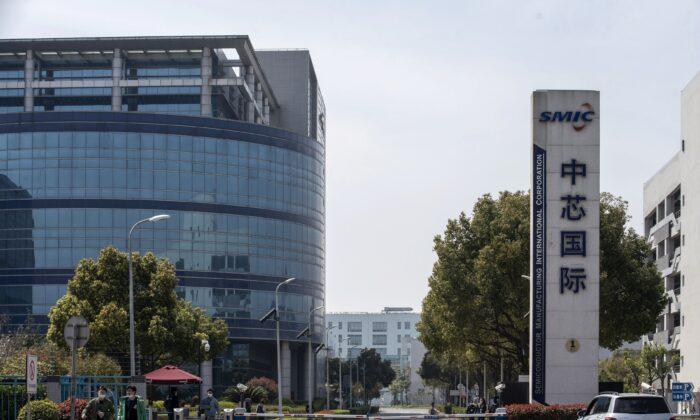China seems to have opened another front in its chip war with the United States. Despite Washington’s bans on the sale of advanced semiconductors and chipmaking equipment to China, the Shanghai-based Semiconductor Manufacturing International Corporation (SMIC) now seems to have domestic access to advanced chips that could render moot the U.S. bans.
Given the history of technology and innovation, it was only ever a question of time before Beijing found a way to work around the U.S.-inspired bans. Still, that event seems to have occurred more quickly and with more drama than anyone expected when the U.S. restrictions went into effect last year. Now, it’s time for Washington to make the next move in the Sino–U.S. tit-for-tat technology war.
The Biden administration’s effort to thwart Chinese technology ambitions built mostly on the 2022 CHIPS and Science Act. It allotted subsidies to chip manufacturers to build operations in the United States and, at the same, instituted bans on the sale of advanced semiconductors and chipmaking technologies to China.
Its biggest success arrived soon after the legislation passed, when the White House convinced Japan and the Netherlands to comply with its provisions. Especially significant was the agreement by the Netherlands-based ASML Holding company to stop sales to China of its most advanced extreme ultraviolet lithography machines for the manufacture of semiconductors. At the time of the agreement, ASML’s leadership insisted that the ban would only encourage the Chinese to develop similar equipment for themselves and that it was only a matter of time before that day would arrive.
Now, even sooner than ASML’s management expected, China seems to have done just that. According to the Beijing-based publication Securities Daily, the Shanghai-based Micro Electronics Equipment Group has developed a lithography machine capable of producing transistors comparable to those produced by ASML equipment and needed for advanced smartphones, computers, and cutting-edge weapons.
The issue was always a matter of size. The smaller the transistor that a machine can make, the more that it can fit on a chip. It was thought that China couldn’t make transistors smaller than 7 nanometers, the scale used to measure their size. Now, it seems that the Chinese have broken that barrier and are verging on even smaller transistors of 5 nanometers.
Two unanswered questions now remain. How do the new Chinese machines compare to existing equipment in the United States, Japan, and the Netherlands? How fast can the Chinese leverage this breakthrough to accelerate the development of advanced chips? If the answers to these two questions include a lot of caveats and delays, then China’s breakthrough will wait until it can make a difference in the Sino-U.S. chip wars. If the answer is that it compares well and can ramp up quickly, then China will have clearly won this round, and the competition with the United States will move on to other matters.
If two questions remain, Beijing’s quick response to Washington’s bans offers at least one important lesson to economic and diplomatic strategists. Any bans, such as the United States arranged in 2022, seldom can have any lasting effect, especially when, as in the case of the CHIPS and Science Act, they aim to stop the spread of technology. The management of ASML looks strikingly prescient with its warning about what China would do.
In a broader context, there’s a second lesson. It concerns the kind of industrial policy behind the CHIPS and Science Act, and Bidenomics for that matter. Because it’s impossible to see the future, any sweeping gesture—by the government or a company—will often miss the mark.
Take the United States’ bans on sales of chips and chipmaking equipment to China. The specifics in the law necessarily settled on circumstances as they existed at the time it was passed, who possessed which technologies, and what technologies were ascendant. But things are always developing in economics, especially where technologies are concerned. In this instance, China seems to have caught up with the West, making the bans moot.
The U.S. objectives could as easily have been disrupted if a different sort of breakthrough had rendered all of the existing chips and equipment obsolete, as in the 1980s, when Japan’s effort to dominate chip manufacturing came to nothing when Intel brought out the microprocessor. Rather than try to control access to what exists, Washington would have done better to unencumber firms to develop the next generation of technology.







